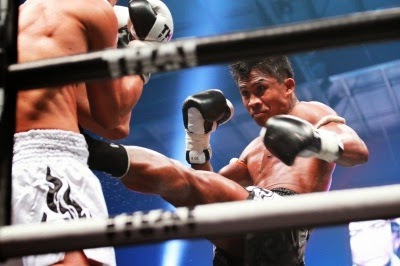This four-part article series highlights some of the obvious signs that your martial art gym – "dojo" - or class isn't actually the genuine article.
Welcome to the final installment of this four-part article series on the signs that your martial arts school in New York may be a "McDojo" and not the genuine article you were hoping for. In the previous two installments, we covered the following points:
Sign # 1: There are 10-year olds running around with black belts.
Sign # 2: They offer a "fast-track" to earning a black belt.
Sign # 3: Your "master" doesn't look very much like a 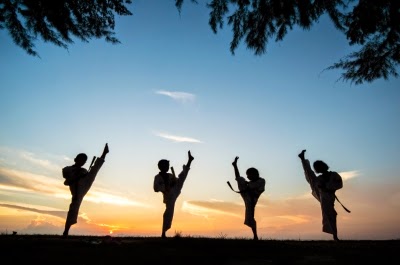 master.
master.
 master.
master.
Sign # 4: The classes are pithy with very little focus on actual combat.
Let's take a look at two final indications before summing up the key issues with learning a martial art through a McDojo.
Sign # 5: The class content focuses mostly on warm-ups and exercise, rather than actual martial arts technique
If you find yourself spending the first 10 minutes of the lesson stretching, the next 30 minutes dancing around to a beat, punching and kicking the air and the final 10 minutes "warming down," you might want to rethink your choice of martial arts school. If you're not learning any valuable grappling, wrestling, punching, kicking and self-defense technique, then chances are you've walked slap-bang into a McDojo!
Sign # 6: There are a lot of kids everywhere
NYC martial arts schools that specialize in teaching youngsters are probably going to provide more of a watered down version, because it's safer that way. The last thing they want on their hands is a furious parent threatening them with a lawsuit because their 6-year old knife-jacked the neighbor's cat. These kinds of establishments are going to reward kids more easily, too, because youngsters tend to get bored and may throw in the towel if they don't move up a belt level in the first few months.
Key Problems with Studying at a McDojo
This may seem fairly obvious: the problem with learning a martial art through a McDojo is that you're not actually learning a martial art. Rather, you're getting exercise through  classes that are teaching you a watered down, even lazy version of the particular form of martial art you've chosen. The skills you acquire and the physical feats you achieve simply could not measure up to a student who is learning from a genuine master. Even if you have a black belt, you wouldn't stand a chance against someone half your age with the same belt.
classes that are teaching you a watered down, even lazy version of the particular form of martial art you've chosen. The skills you acquire and the physical feats you achieve simply could not measure up to a student who is learning from a genuine master. Even if you have a black belt, you wouldn't stand a chance against someone half your age with the same belt.
 classes that are teaching you a watered down, even lazy version of the particular form of martial art you've chosen. The skills you acquire and the physical feats you achieve simply could not measure up to a student who is learning from a genuine master. Even if you have a black belt, you wouldn't stand a chance against someone half your age with the same belt.
classes that are teaching you a watered down, even lazy version of the particular form of martial art you've chosen. The skills you acquire and the physical feats you achieve simply could not measure up to a student who is learning from a genuine master. Even if you have a black belt, you wouldn't stand a chance against someone half your age with the same belt.
This is where the real issues arise: the false sense of achievement and of capability. While true martial arts teach the individual to avoid combat and ultimately, to seek peace, those with a half-baked education in combat technique will probably want to practice it on the first irritating drunkard they come across. This puts TWO people at risk, because that "drunkard" may be able to show you a thing or two about real-life combat your McDojo classes failed to.
And you don't want to have to learn that lesson the hard way.
Ultimately, if you've signed up for martial arts at New York studio because you want to get fit and look amazing with your shirt off, then as long as you're getting the workout you want, you should be fine. But, if you want to truly master a form of martial art and all the various tiers that come with it – physical skill, self-defense, mental control and code of ethics – you should be wary of signing up with a McDojo.
 by its cover," but it's worth taking into consideration, especially if have noticed other suspicious signs. What does a true martial arts instructor or master look like? Well, sure, you can hope for an ancient Japanese dude with a beard, but chances are you won't get him. A rule of thumb is this…
by its cover," but it's worth taking into consideration, especially if have noticed other suspicious signs. What does a true martial arts instructor or master look like? Well, sure, you can hope for an ancient Japanese dude with a beard, but chances are you won't get him. A rule of thumb is this… are aimed at increasing fitness, while making their students feel like they're actually learning a martial art don't typically include much physical combat. A true martial arts class will have students learning a great variety of moves, maneuvers and combat techniques, which they practice on each other (obviously using mild force.) McDojos tend to specialize in classes with very little physical contact between students and with no grappling or fighting being practiced.
are aimed at increasing fitness, while making their students feel like they're actually learning a martial art don't typically include much physical combat. A true martial arts class will have students learning a great variety of moves, maneuvers and combat techniques, which they practice on each other (obviously using mild force.) McDojos tend to specialize in classes with very little physical contact between students and with no grappling or fighting being practiced. codes revered and upheld by true martial arts masters. Rather what they teach is a vastly "watered down" version of the original form and while you think you are learning the skills necessary to defend yourself, in a real life context, you're likely to get your lights punched out.
codes revered and upheld by true martial arts masters. Rather what they teach is a vastly "watered down" version of the original form and while you think you are learning the skills necessary to defend yourself, in a real life context, you're likely to get your lights punched out. children holding the same colored belts as their instructor, there's something fishy going on. Mastering a martial art takes many years of dedicated practice and several hours per day honing your skills. It requires discipline, application and dedication. True masters of martial arts - those who hold real black belts – have dedicated their lives to learning and practicing.
children holding the same colored belts as their instructor, there's something fishy going on. Mastering a martial art takes many years of dedicated practice and several hours per day honing your skills. It requires discipline, application and dedication. True masters of martial arts - those who hold real black belts – have dedicated their lives to learning and practicing.
 minute class that, using martial arts inspired moves and maneuvers, will give you a killer whole body workout. It's also way more fun! But just because it may be advertised as "capoeira class" or "krav maga workout" or "kickboxing" doesn't mean you are actually going to master these martial art disciplines.
minute class that, using martial arts inspired moves and maneuvers, will give you a killer whole body workout. It's also way more fun! But just because it may be advertised as "capoeira class" or "krav maga workout" or "kickboxing" doesn't mean you are actually going to master these martial art disciplines. experienced or inexperienced you are, you should have the opportunity to compete.
experienced or inexperienced you are, you should have the opportunity to compete.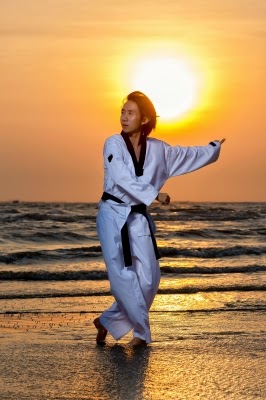 students through their lives and to gently influence absolutely everything they do, from their actions and choices to the very foundations of their decision-making.
students through their lives and to gently influence absolutely everything they do, from their actions and choices to the very foundations of their decision-making.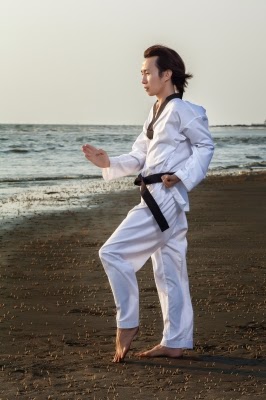 If this concerns you, don't worry, because with practice and the perfection of technique, you'll be able to chop a solid block of wood or concrete in half using only the straight edge of your hand.
If this concerns you, don't worry, because with practice and the perfection of technique, you'll be able to chop a solid block of wood or concrete in half using only the straight edge of your hand. martial art system in America.
martial art system in America.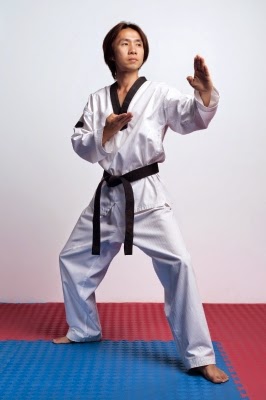 people of all ages, from children as young as 5 and 6 to active people who are well into their 70's and 80's.
people of all ages, from children as young as 5 and 6 to active people who are well into their 70's and 80's. strike and break with the hand and "do" is the way of life. So, together, Taekwondo is roughly translated as the way of striking and breaking with the hand and foot.
strike and break with the hand and "do" is the way of life. So, together, Taekwondo is roughly translated as the way of striking and breaking with the hand and foot.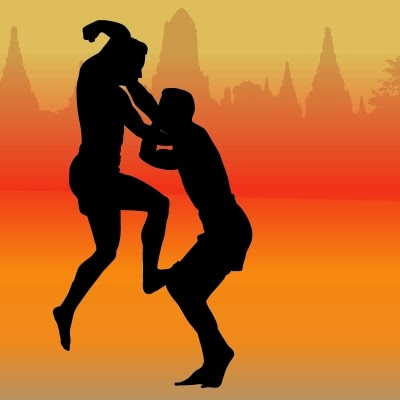 required to be fully skilled in Taekwondo as a part of their combat training. This enables them to fight enemy at close range without the use of weaponry.
required to be fully skilled in Taekwondo as a part of their combat training. This enables them to fight enemy at close range without the use of weaponry.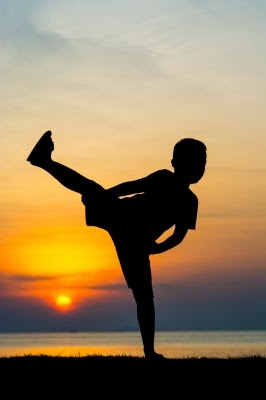 styles that have been accepted by the Olympic Games. The other is Judo.
styles that have been accepted by the Olympic Games. The other is Judo.
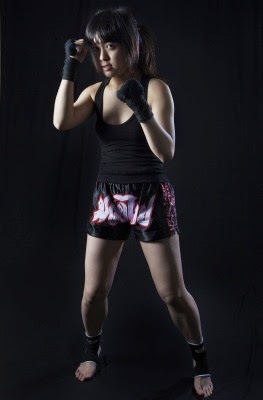
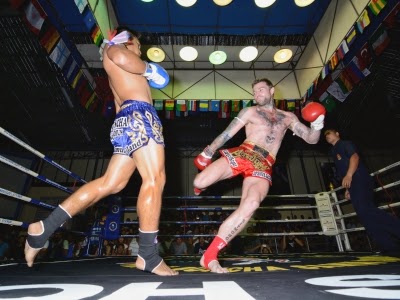 first book before you can participate. Most studios or gyms are more than happy to have interested people come in and take a look before they decide to join or not, so don't hesitate to stop by!
first book before you can participate. Most studios or gyms are more than happy to have interested people come in and take a look before they decide to join or not, so don't hesitate to stop by!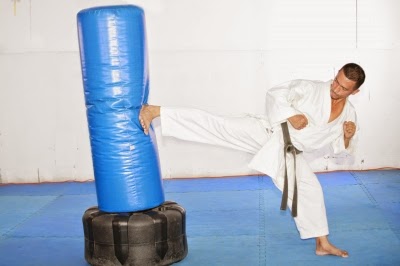 into an aerobic routine, which is performed to music. You don't actually strike anything and you aren't learning how to defend yourself effectively. What you are doing is burning off a lot more calories than you would by simply jogging on the treadmill! Cardio kickboxing offers Atlanta residents a killer workout that is incredibly effective for weight loss and toning.
into an aerobic routine, which is performed to music. You don't actually strike anything and you aren't learning how to defend yourself effectively. What you are doing is burning off a lot more calories than you would by simply jogging on the treadmill! Cardio kickboxing offers Atlanta residents a killer workout that is incredibly effective for weight loss and toning.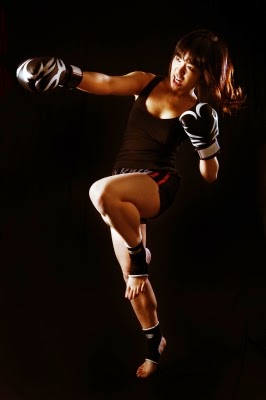 situation, you don't have to do anything you don't want to. Many students of kickboxing only wish to improve their fitness, so they come to learn the skills and techniques and to run through the rigorous training without ever actually fighting.
situation, you don't have to do anything you don't want to. Many students of kickboxing only wish to improve their fitness, so they come to learn the skills and techniques and to run through the rigorous training without ever actually fighting.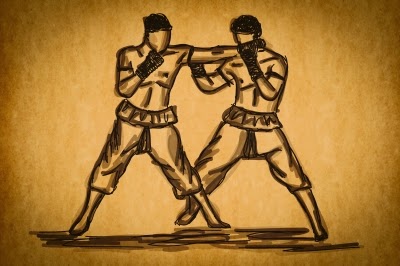 so don't let it hold you back. If you are able to be physical and if your doctor has given you the green light on rigorous exercise, there is no reason for you to limit yourself and not take up kickboxing. In fact, the kind of training offered by this form of martial arts might actually see you on a shorter road to rehabilitation and recovery! Make sure you explain your injury to your instructor and pace yourself; work around it."
so don't let it hold you back. If you are able to be physical and if your doctor has given you the green light on rigorous exercise, there is no reason for you to limit yourself and not take up kickboxing. In fact, the kind of training offered by this form of martial arts might actually see you on a shorter road to rehabilitation and recovery! Make sure you explain your injury to your instructor and pace yourself; work around it."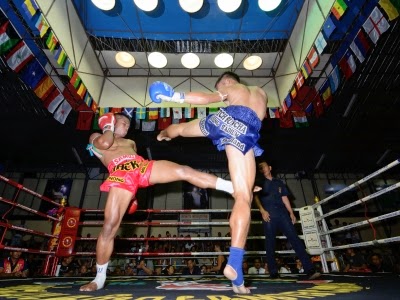 self-defense techniques as an adult, or you can learn kickboxing to stay fit and healthy post-retirement. It's all in the mind: if you eliminate those mental boundaries, you can do it!"
self-defense techniques as an adult, or you can learn kickboxing to stay fit and healthy post-retirement. It's all in the mind: if you eliminate those mental boundaries, you can do it!" started with martial arts. You get fit through regular classes and you will find yourself hungering for greater physical activity once you have started. You don't need to be fit at all to join a beginner's class and, in any case, you'll find yourself getting fit quick. Please note that this is not to say that beginner classes are easy. Expect to sweat, grunt, pull and strain!"
started with martial arts. You get fit through regular classes and you will find yourself hungering for greater physical activity once you have started. You don't need to be fit at all to join a beginner's class and, in any case, you'll find yourself getting fit quick. Please note that this is not to say that beginner classes are easy. Expect to sweat, grunt, pull and strain!"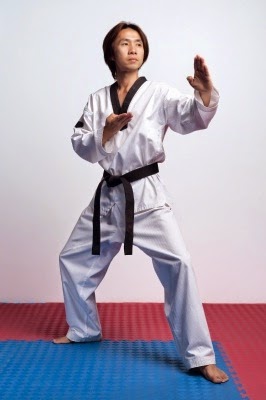

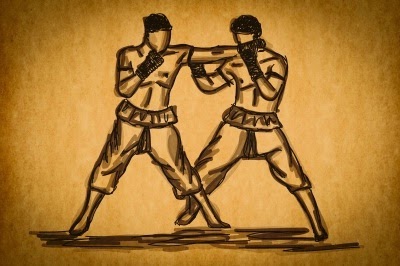
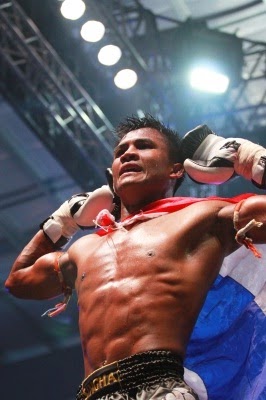
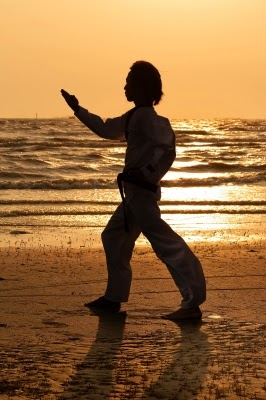 situations of conflict could be avoided if we were more patient, calm and centered. Most fights with friends, family, a spouse or that pushy person on the bus could be neatly sidestepped if we ourselves weren't already stressed to breaking point.
situations of conflict could be avoided if we were more patient, calm and centered. Most fights with friends, family, a spouse or that pushy person on the bus could be neatly sidestepped if we ourselves weren't already stressed to breaking point. small or frail a child might be. Just about all forms of martial arts and especially jiu-jitsu and its Brazilian counterpart teach students how to use their opponent's weight, size and strength against them, so it doesn't matter if the school bully is bigger and stronger than your kid. He or she should be able to defend him or herself and get away safely.
small or frail a child might be. Just about all forms of martial arts and especially jiu-jitsu and its Brazilian counterpart teach students how to use their opponent's weight, size and strength against them, so it doesn't matter if the school bully is bigger and stronger than your kid. He or she should be able to defend him or herself and get away safely. you can get your body in the best physical shape of your life. Combine this with a balanced, healthy eating regime and you'll build muscle, lose unwanted fat, increase your flexibility and develop master coordination. Learning martial arts like Krav Maga is about mastering your body and training it to become a powerhouse and endurance machine, even if you are smaller and lighter than your opponent. Having a set of abs you could grate a block of cheese on doesn't hurt either!
you can get your body in the best physical shape of your life. Combine this with a balanced, healthy eating regime and you'll build muscle, lose unwanted fat, increase your flexibility and develop master coordination. Learning martial arts like Krav Maga is about mastering your body and training it to become a powerhouse and endurance machine, even if you are smaller and lighter than your opponent. Having a set of abs you could grate a block of cheese on doesn't hurt either! achieved.
achieved. I felt I had to notify the police of my situation. I wanted someone there on the day Darryn was to come and get his stuff, so I arranged with a local New York cop to drop by and ensure that the collection went smoothly.
I felt I had to notify the police of my situation. I wanted someone there on the day Darryn was to come and get his stuff, so I arranged with a local New York cop to drop by and ensure that the collection went smoothly.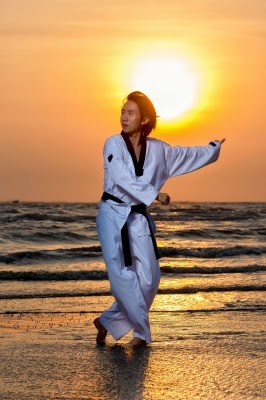 again at my
again at my 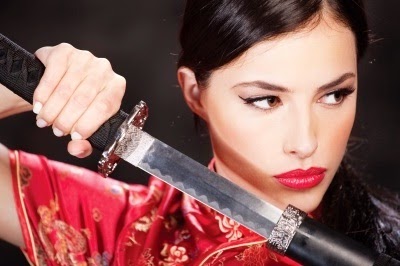

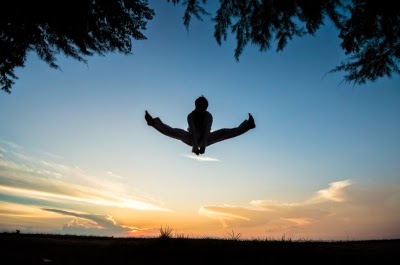 language Hebrew and literally means "contact combat". True to its name, krav maga is an intense and full contact combat NYC martial art that focuses on training students to face very real world situations. In other words, it’s anything but fight choreography and what you learn in
language Hebrew and literally means "contact combat". True to its name, krav maga is an intense and full contact combat NYC martial art that focuses on training students to face very real world situations. In other words, it’s anything but fight choreography and what you learn in 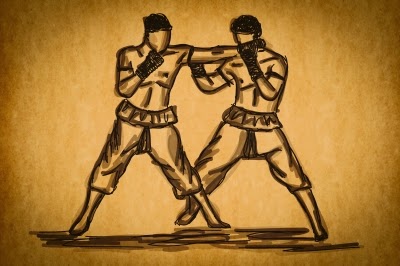 Knowing that you have krav maga classes behind your name does wonders for the confidence and self-esteem with which you might handle such situations. But this is not to say that krav maga classes encourage New York residents to seek out fights! Quite the contrary, the primary rule of this martial art form is to avoid combat unless it is impossible or unsafe to do so. The next rule in line is to debilitate your attacker quickly and mercilessly and then to escape.
Knowing that you have krav maga classes behind your name does wonders for the confidence and self-esteem with which you might handle such situations. But this is not to say that krav maga classes encourage New York residents to seek out fights! Quite the contrary, the primary rule of this martial art form is to avoid combat unless it is impossible or unsafe to do so. The next rule in line is to debilitate your attacker quickly and mercilessly and then to escape.
